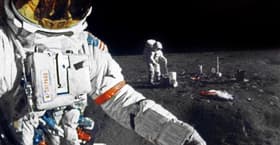Fifty years ago today, on January 31, 1971, at 4:03 pm EST, a Saturn V rocket lifted off from Pad A of Launch Complex 39 at the Kennedy Space Center carrying Apollo 14 – the Moon mission that would make or break the US space program.
If Apollo 14 is remembered at all by most people, it's mainly as the answer to trivia questions like, who was the oldest man to walk on the Moon, or what is the longest lunar golf drive? But it was far more than that. Arguably, it was one of the most important of all the Apollo lunar landing missions, with the possible exception of Apollo 11.
This is because Apollo 14 was the follow-on mission from the ill-fated Apollo 13, which suffered an oxygen tank explosion on the way to the Moon that crippled the Command Service Module (CSM) and forced the three astronauts aboard to use the Lunar Module (LM) as a lifeboat as they struggled to return to Earth.
It was a heroic episode that showed the value of courage, innovation, and training, but it also almost killed the Apollo program, which was already faced with an indifferent public and a hostile congress that would rather spend the NASA budget elsewhere. This put a lot of pressure on the space agency and the crew of Apollo 14. If it failed, if it was forced to turn back, it would almost certainly have been the last American Moon landing for the foreseeable future.
Apollo 14 was originally scheduled to fly in 1970 as part of NASA's plan to make two Moon landings per year. Not surprisingly, the Apollo 13 accident delayed this until 1971 because of the inevitable investigation, the need to modify the CSM to avoid a replay, and the retraining of the next crew, who had to take over 13's mission objectives to explore the Fra Mauro region in the lunar highlands.
The first American in space returns
The mission was also remarkable because its Commander, Captain Alan Bartlett Shepard Jr (USN), was one of the original Mercury Seven astronauts chosen in 1959. He became America's first man in space on May 5, 1961, when he was launched into a suborbital trajectory atop a Redstone rocket on the Mercury 3 mission. Unfortunately, Shepard was grounded not long after due to an ear disorder called Ménière's disease. Now, 10 years later, after experimental surgery, he was cleared for flight again and was returning to space at the age of 47 to become the oldest person to have set foot on the Moon.
*
*
*__ https://newatlas.com/space/apollo-14-50th-anniversary/


























